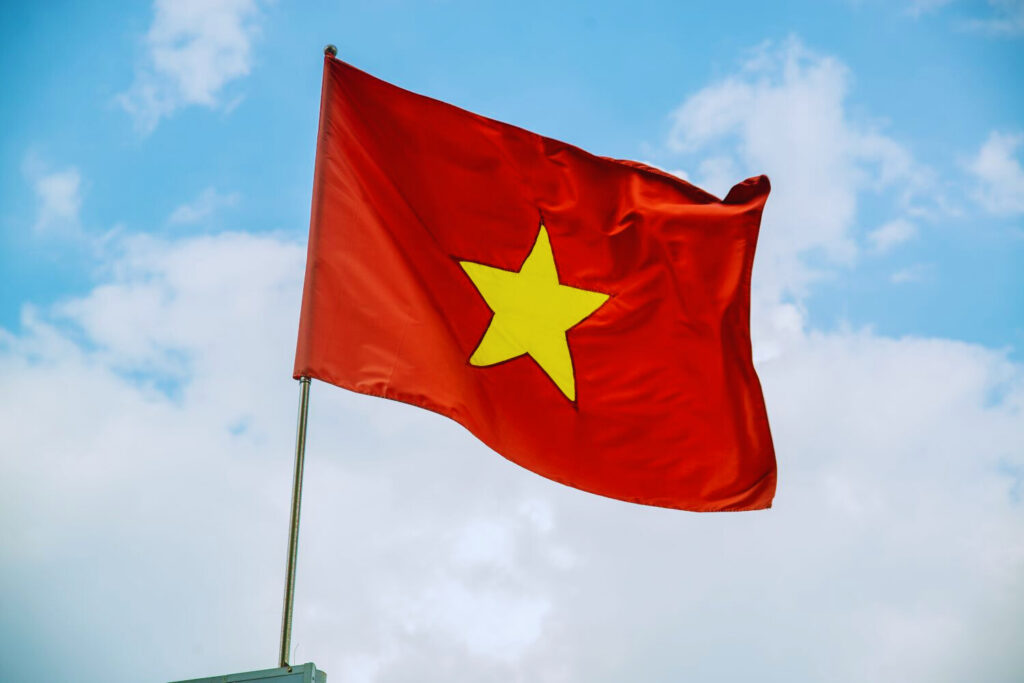In this comprehensive guide, we delve into the rich history and profound symbolism encapsulated within the flag of Vietnam. We delve into the emblem’s history and its deep symbolism, revealing its significance in representing the nation’s identity and struggles from inception to the present day.
Origins of the Flag
The Vietnamese flag’s origins date to the early 20th century, when nationalist movements aimed for independence from colonial rule. Designed by Luong Van Canh, the flag has a vibrant red background symbolizing the bloodshed and sacrifices in the fight for freedom. Centered within is a bold, golden-yellow star, representing the unity of the Vietnamese people under the Communist Party.
Evolution Over Time
Throughout Vietnam’s tumultuous history, the flag has undergone several modifications reflective of the country’s changing political landscape. From the establishment of the Democratic Republic of Vietnam in 1945 to the reunification of North and South Vietnam in 1976, each iteration of the flag has carried its own significance, embodying the aspirations and triumphs of the Vietnamese people.
Symbolism and Meaning
The flag’s colors and symbols hold profound significance, deeply rooted in Vietnamese culture and history. The vibrant red symbolizes the revolutionary struggle and the sacrifices made for independence, while the golden star represents the guiding light of socialism and the unity of the people in their quest for a brighter future.
Cultural Significance
Beyond its political symbolism, the flag holds immense cultural significance for the Vietnamese people. It serves as a source of pride and identity, evoking a sense of unity and patriotism among citizens both at home and abroad. From government buildings to school classrooms, the flag is prominently displayed as a symbol of national unity and strength.
International Recognition
Internationally, the flag of Vietnam is recognized as a symbol of resilience and perseverance in the face of adversity. Its bold design and powerful symbolism have earned it a place among the world’s most iconic flags, representing not only the nation’s struggle for independence but also its enduring spirit of resilience and determination.
Design Elements: Deciphering the Symbolic Motifs
Colors:
- Red: symbolizes the bloodshed and sacrifice of Vietnam’s revolutionary heroes.
- Yellow: represents the country’s wealth and prosperity.
Star and Emblem:
- Five-Pointed Star: Reflects the unity of Vietnam’s five main social classes – workers, peasants, intellectuals, traders, and soldiers.
- Emblem: Showcases a depiction of the iconic rice plant, symbolizing the nation’s agricultural heritage and the resilience of its people.
Frequently Asked Questions (FAQs) About the Flag of Vietnam
1. What do the colors of the Vietnamese flag represent?
The vibrant red color of the flag symbolizes the bloodshed and sacrifices made in the struggle for independence. The golden-yellow star represents the unity of the Vietnamese people under the Communist Party.
2. How has the design of the Vietnamese flag evolved over time?
The flag has undergone several modifications, reflecting Vietnam’s changing political landscape. From its inception in the early 20th century to its current design, each iteration has carried its own significance, embodying the aspirations and triumphs of the Vietnamese people.
3. What is the significance of the golden star on the Vietnamese flag?
The golden star on the flag represents the guiding light of socialism and the unity of the people in their quest for a brighter future. It serves as a symbol of hope and aspiration for a better tomorrow.
4. How is the Vietnamese flag used in everyday life?
The flag holds immense cultural significance for the Vietnamese people and is prominently displayed in various settings, including government buildings, schools, and public events. It serves as a source of pride and identity, evoking a sense of unity and patriotism among citizens.
5. Is the Vietnamese flag recognized internationally?
Yes, the flag of Vietnam is widely recognized as a symbol of resilience and perseverance. Its bold design and powerful symbolism have earned it a place among the world’s most iconic flags, representing the nation’s struggle for independence and its enduring spirit of resilience.
6. What is the significance of the red background on the Vietnamese flag?
The red background of the flag symbolizes the revolutionary struggle and the sacrifices made by the Vietnamese people in their fight for freedom and independence. It serves as a reminder of the nation’s history and the resilience of its people.
Conclusion
In conclusion, the flag of Vietnam stands as a testament to the nation’s rich history, enduring resilience, and unwavering commitment to freedom and unity. From its humble origins to its status as a globally recognized symbol, the flag continues to inspire and unite the Vietnamese people as they chart their course toward a brighter future.

